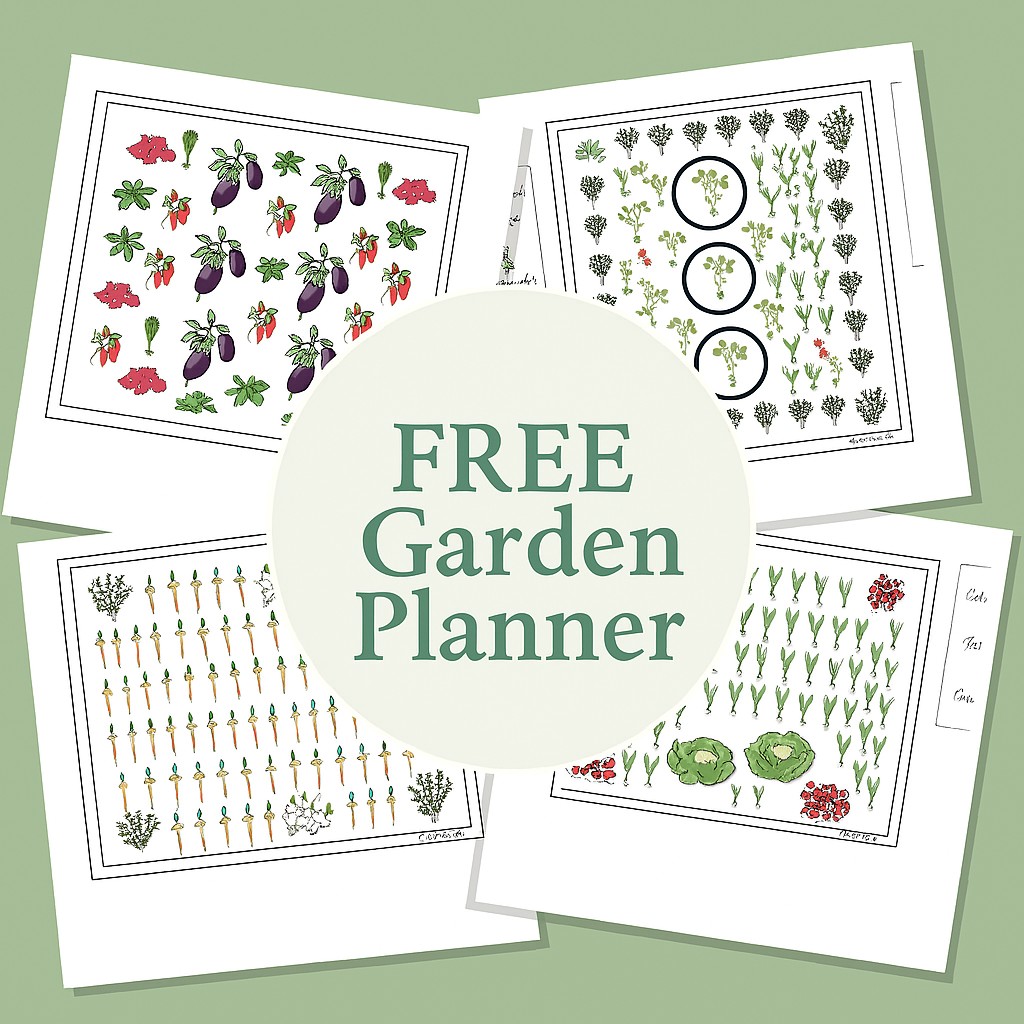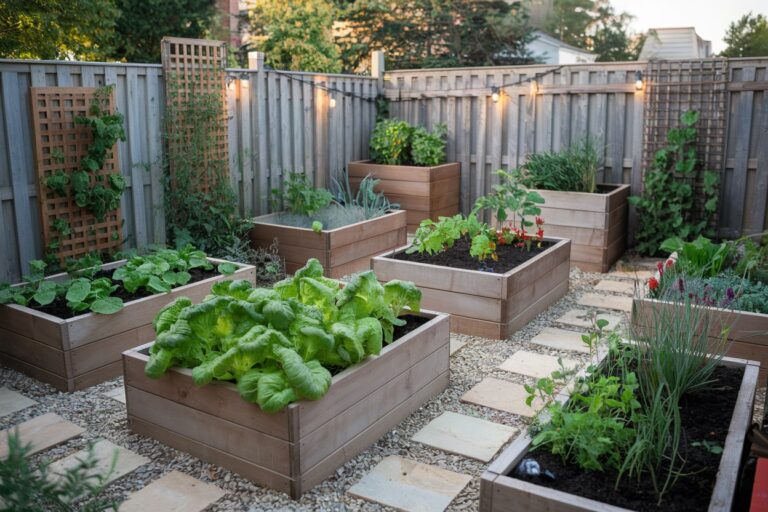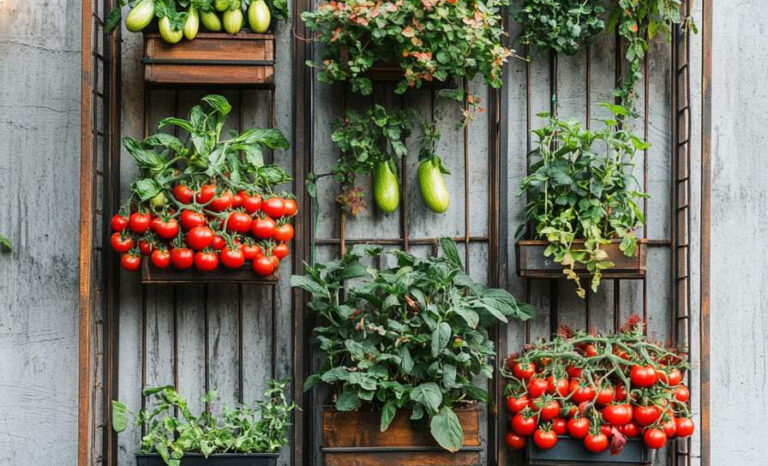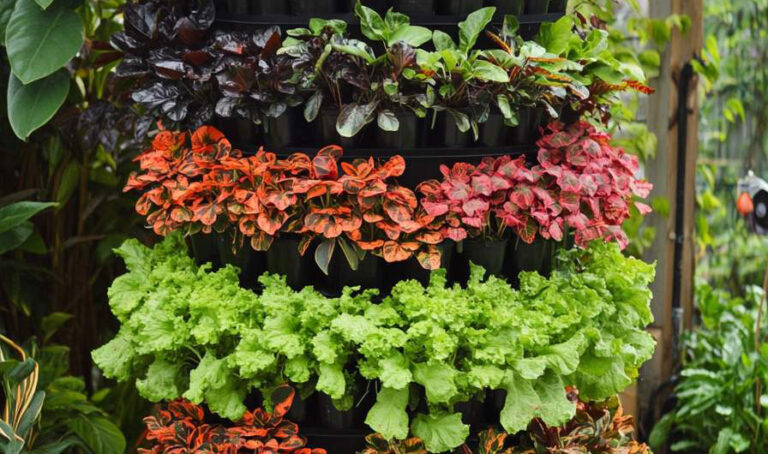5 Tomato Trellis Ideas for Beginners: A Simple Guide
Have you ever wondered how to grow healthy, juicy tomatoes without them falling all over the place? One of the secrets to growing great tomato plants is using a trellis. Trellises help support the tomato vines, keeping them off the ground, giving them better air flow, and making it easier for you to pick the tomatoes. Let’s look at some easy trellis ideas that will help you grow awesome tomatoes.
Why Use a Trellis for Your Tomatoes?
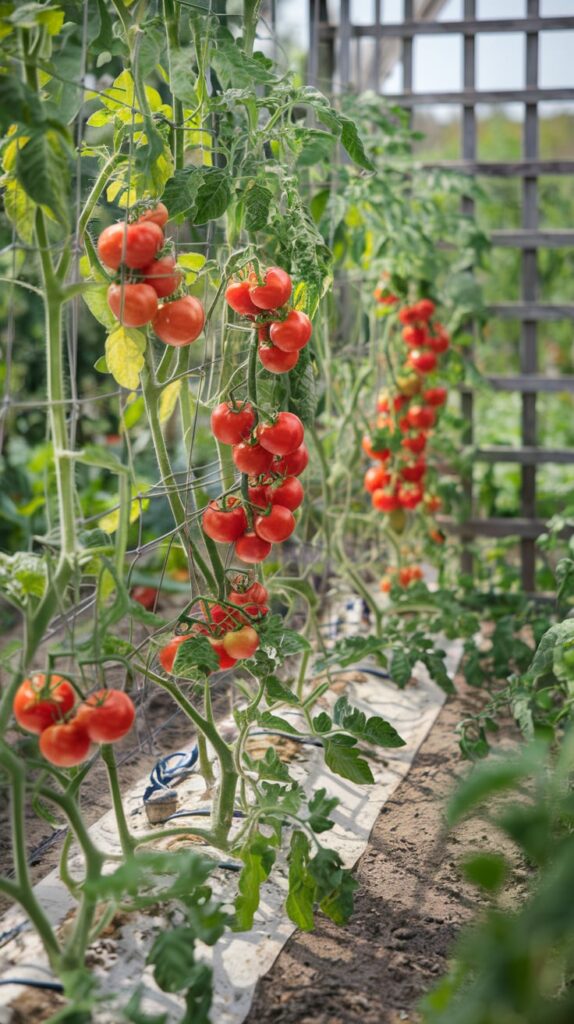
Tomato plants like to spread out, and without support, they can end up lying on the ground. This makes them easy targets for pests and diseases, and it also means fewer tomatoes. Using a trellis keeps your plants standing tall, making them healthier, giving you more tomatoes, and making them easier to care for. Plus, trellised tomatoes just look neat and organized!
Types of Tomato Trellises for Beginners
1. Single Stake Trellis

The simplest way to trellis tomatoes is by using a single stake. This is an easy and cheap option that’s great for beginners. All you need is a sturdy wooden or metal stake about 5-6 feet tall.
- How to Set It Up: Push the stake about 12 inches into the soil next to your tomato plant. Tie the main stem of the plant to the stake using soft twine or cloth strips. Keep tying the plant every 10-12 inches as it grows taller.
- Best For: Determinate (bush) tomatoes that don’t grow super tall.
- Pros: Cheap, easy to set up.
- Cons: Needs regular tying and isn’t great for larger, indeterminate varieties.
2. Cage Trellis
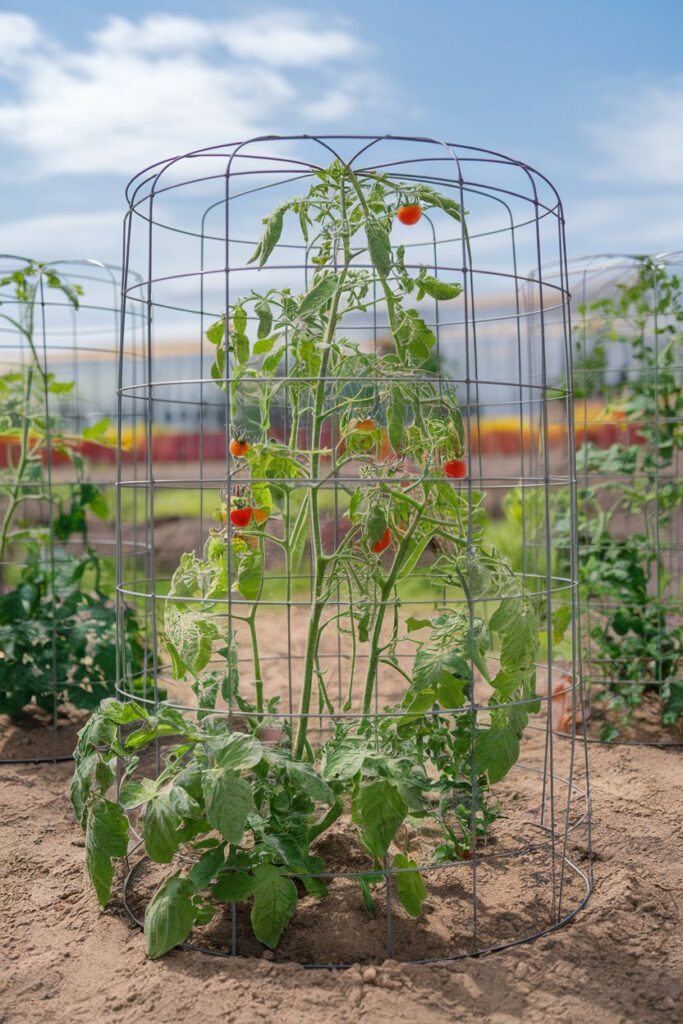
Tomato cages are another easy option for beginners. They give support all around the plant and are easy to find at garden stores.
- How to Set It Up: Just place the cage over your young tomato plant. As the plant grows, it will weave through the cage for support.
- Best For: Both determinate and indeterminate tomatoes, but especially good for bush varieties.
- Pros: Low maintenance, great support, easy to use.
- Cons: Can be bulky and might not be strong enough for very large plants.
3. Florida Weave Trellis

The Florida Weave works well if you have several tomato plants in a row. It uses stakes and twine to support the plants.
- How to Set It Up: Put stakes between every two or three plants. Start about 8 inches off the ground and weave garden twine from stake to stake, wrapping it around each one. Do this every 8-12 inches as the plants grow.
- Best For: Rows of determinate tomatoes.
- Pros: Strong support, good for multiple plants.
- Cons: Takes some practice to do right, needs regular adjusting.
4. A-Frame Trellis
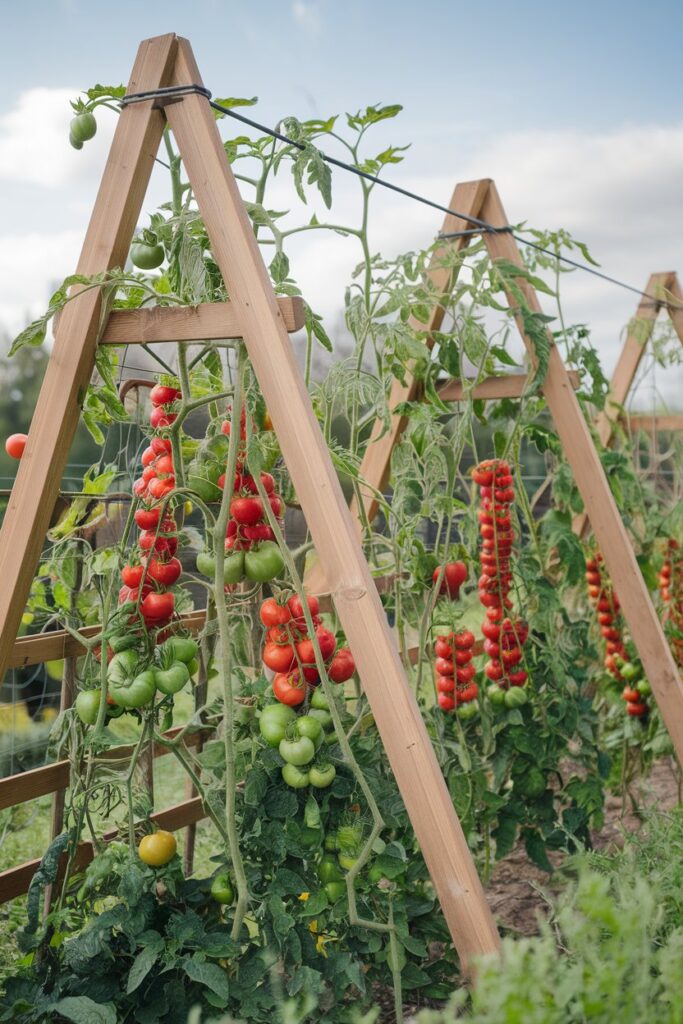
An A-frame trellis is a simple DIY project that gives great support for big tomato plants. It’s made of two slanted panels that lean together at the top.
- How to Set It Up: Make two wooden or metal frames and lean them together to form an “A” shape. Tie the tops together for stability. You can add cross beams or twine for extra support.
- Best For: Indeterminate tomatoes that grow tall and need a lot of room.
- Pros: Strong, lots of vertical space.
- Cons: Requires some DIY skills and space in your garden.
5. String Trellis (Vertical String Method)

This method uses strings tied from a horizontal bar above your plants down to the base of each plant. It’s perfect for growing tomatoes in greenhouses or under a patio.
- How to Set It Up: Secure a strong bar or pole above your tomato plants (about 6-7 feet high). Tie garden twine from the bar to the base of each plant. Gently wrap the main stem around the twine as it grows.
- Best For: Indeterminate (vining) tomatoes, especially in greenhouses.
- Pros: Keeps plants upright, saves space, easy to harvest.
- Cons: Needs a sturdy structure above the plants, works better indoors or in a sheltered area.
Tips for Success with Tomato Trellises
- Use Soft Ties: Always use soft material like garden twine or cloth strips to tie your tomatoes. Hard wire or string can hurt the stem and damage the plant.
- Check Regularly: As your tomatoes grow, you’ll need to keep tying them to the trellis or adjusting the twine. Regular checks will make sure they’re well-supported and healthy.
- Prune When Needed: Pruning helps keep the plant under control and makes sure air can move through it, which reduces the risk of disease.
- Choose the Right Trellis for Your Tomato Type: Determinate tomatoes (which grow to a certain height and stop) need less support compared to indeterminate tomatoes (which keep growing taller). Pick the trellis that matches your tomato type for the best results.
